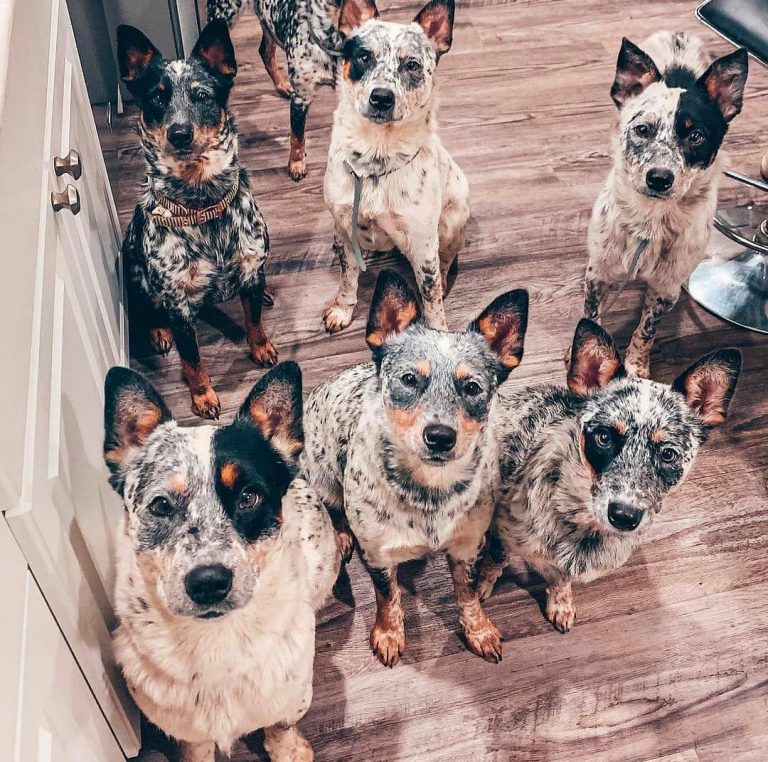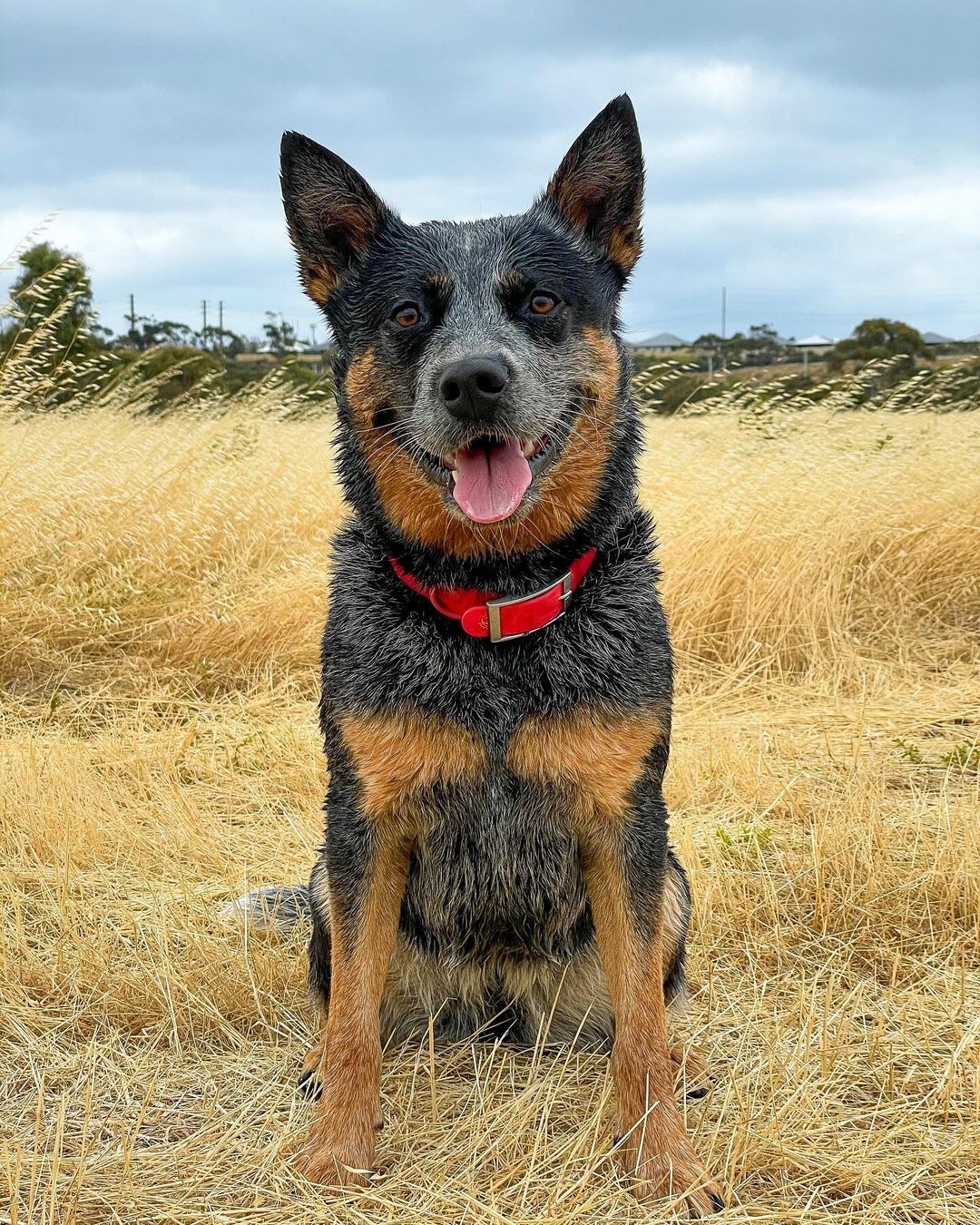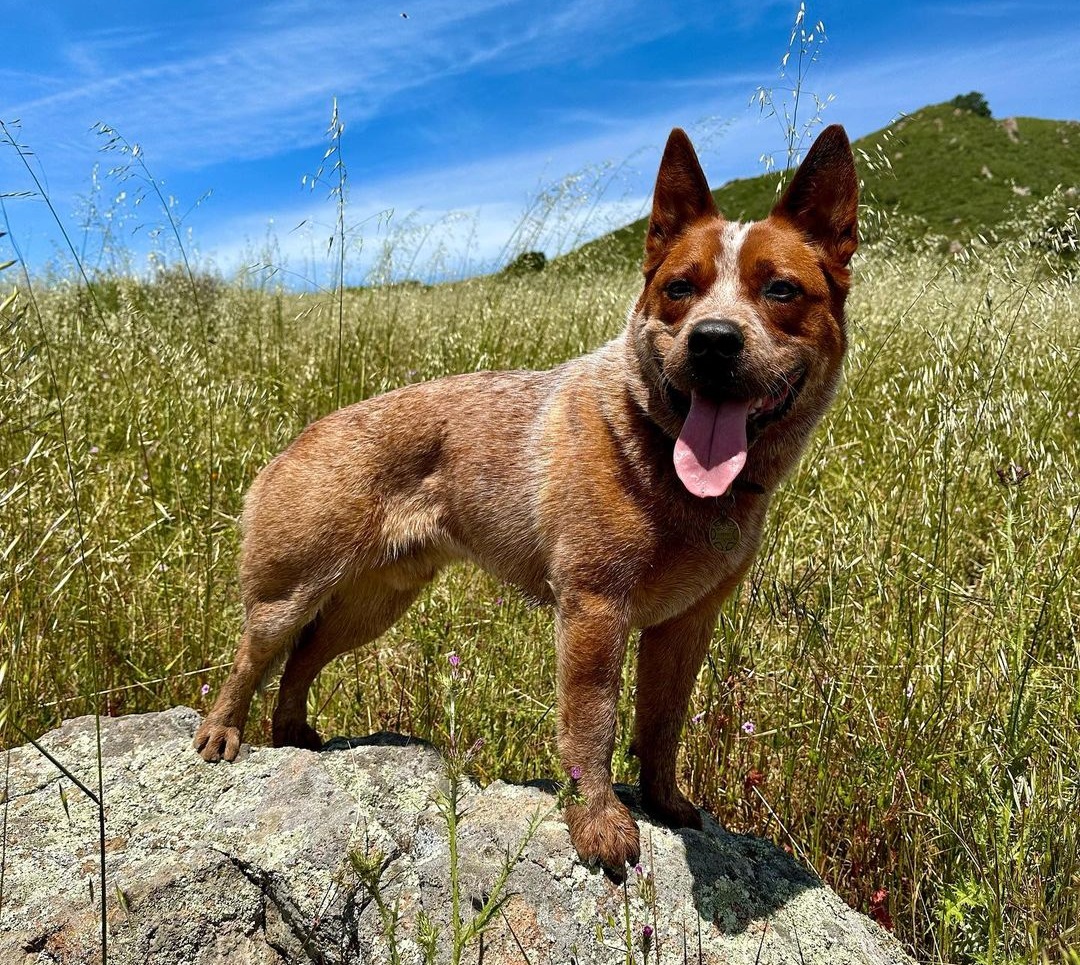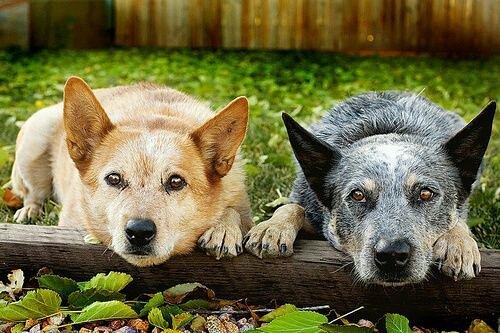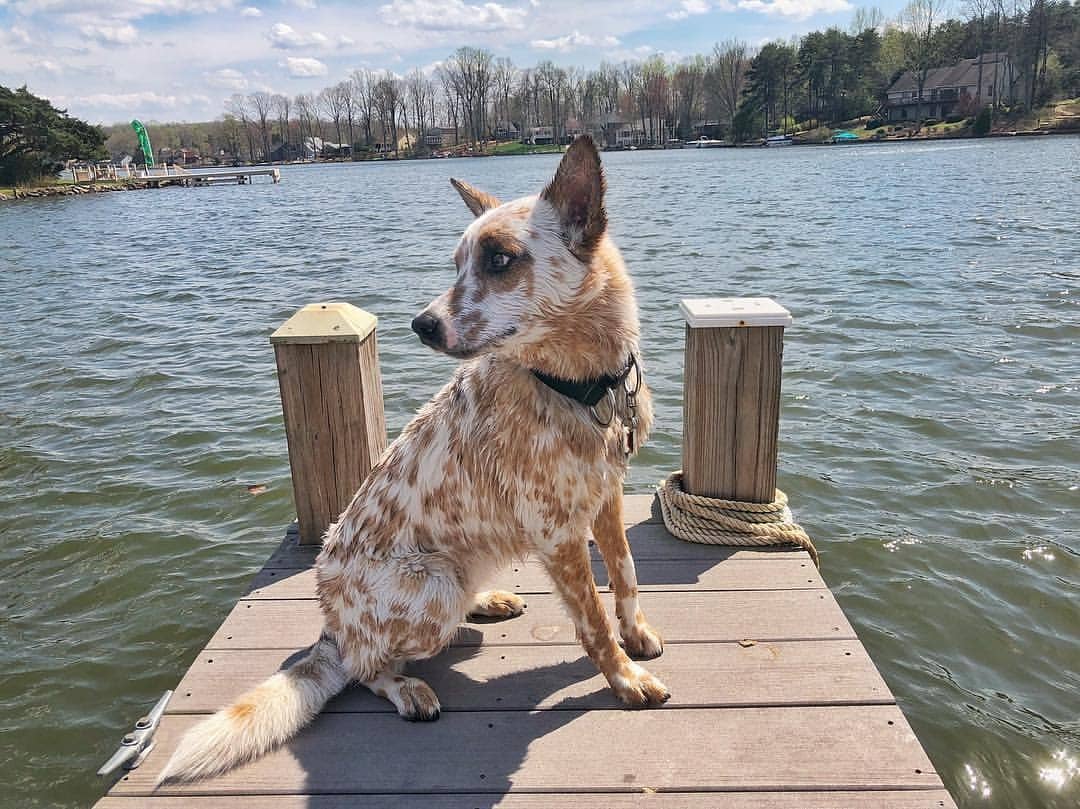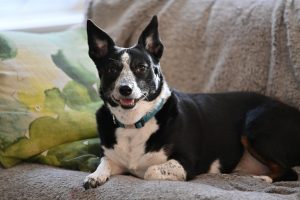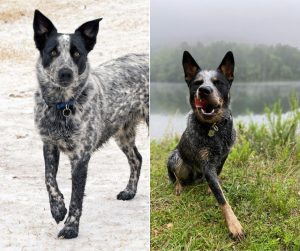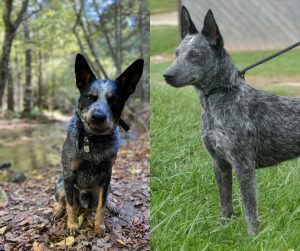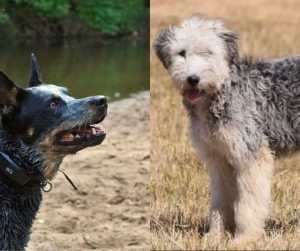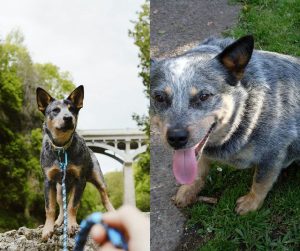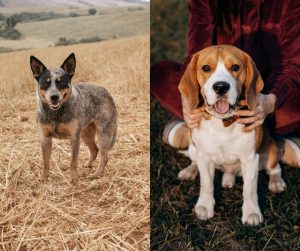Selecting the coat color and coat pattern as part of breed development is something breeders have been trying for centuries. Even back in ancient times, shepherds preferred a white sheepdog because it was unlike a wild beast. Now, when it comes to Australian Cattle Dog colors, most people know the Blue Merle and Red Merle. But what are some rare Australian Cattle Dog colors?
What is the Breed Standard set by the AKC?
When we talk about coloring and coat color patterns, first, we have to look at the breed standard set by the American Kennel Club. According to the AKC, the standard calls for blue speckles and red speckles.
These colors are achieved by the intermingling of white hairs with black hair to create the blue speckle, and white hairs with red hairs to achieve the red speckled dog. The base color in blue dogs presents as black, and the base color in red speckle dogs presents as solid red. Without intermingling white hairs, a Blue Heeler dog will appear black, and a Red Heeler dog will appear solid red.
The proper red color is genetically dominant. White is critical to all colors and patterns in the Australian Cattle Dog. Genetically, these dogs are extremely white. Here is a fun fact. Australian Cattle Dog breed is born white and without the introduction of the ticking. If not for the speckles that appear later on, the dog would be predominantly white in adulthood.
At birth, an Australian Cattle puppy will have visible markings on the head and tails. But they can also be solid white. Markings are black patches on blue dogs and red patches on red dogs.
The distinctive blue or red pattern develops in the first few weeks after whelping. While it is not mandatory, all Australian Cattle Dogs, whether they are a Blue Merle puppy or Red Merle puppy, have a white marking on the forehead.
Blue Merle Standard
The standard for a Blue Merle puppy is where the color is blue, blue mottled, or blue speckled with or without other markings. The allowed markings are black, blue, or tan markings appearing on the head. Markings should be evenly distributed for preference.
The forelegs tan midway up the legs are extending up the front to the breast and throat, white tan on the jaws, and tan on the inside of the hindlegs or inside of the thighs.
Black markings on the body are acceptable, but not desirable. Black markings appear on the head, often as eye patches. They are completely normal and often common. Yet, black markings on the body are not desirable. The black markings are considered color and texture faults, but they do not impact the working ability of your pup.
Tan markings are allowed and often appear in unusual locations for dogs that carry the gene for tan points. A tan pointed dog may appear as pips above the eyes, on the sides of the muzzle, pips on the cheeks, on the front of the neck below the head, or patches on the front of the chest and lower legs. Tan can vary in shade from pale to a very deep and rich color.
Per AKC standards and preference, the richer the tan the better. Tan undercoat is permissible on the body, providing it does not show through the blue outer coat.
Blue Speckle is a pattern produced by small, and irregular groups of white hair clustered together and distributed more or less evenly throughout the coat. Per standard, these clusters are up to about one inch.
Blue Mottle is another pattern, produced by irregular areas of white hair slightly larger than speckle distribution. These areas can range from one inch to 1 ¼ inch. Larger white areas are undesirable and considered a mismark.
Red Merle Standard
The color of the Red Merle puppy should be good even red speckles all over the body, including the undercoat. They should not be white or cream. Red markings on the head and tail are completely normal.
Red markings can also be found on the body. And while they are permissible, they are not desirable. Red markings on the body are considered faults, but they do not impact the working and training ability of your puppy.
The undercoat of a Red Merle must be red, not white or cream. If you have a heavily speckled dog, areas of white may possibly include a small amount of white undercoat hair.
A red speckle pattern is a small, irregular group of white hair clustered together in strips distributed more or less evenly throughout the coat. They are distributed against a red background. The size of the speckle ranges from half an inch to a whole inch.
Red speckle is the only color provided for the standard for red dogs. Blue Merle dogs may have more variations, like Blue mottle, but that is not the case with the Red Heeler dog breed.
Quick History of the Breed
The Australian Cattle Dog, or Queensland Heeler, is a breed selectively bred in Australia for its working abilities. The dog is praised for its skills in moving cattle over long distances and rough terrain. In Australia, moving cattle from one place to another was a necessity. Cattle were moved after purchase to the property of the new owner.
Moving the cattle required a dog with specific abilities, including a huge amount of stamina, intelligence, determination, and willingness to listen.
In the 1840s, a settler named Thomas Hall developed the Australian Cattle dog breed. He crossed blue-merle smooth Collies with dingos, resulting in a dog that worked well and had qualities needed for cattle work. He developed the herding dog to have endurance, determination, and intelligence. But also, praised physical traits like a robust and rugged body with a short coat.
This was needed to maintain the cleanliness of the dog. But also, for the dog to be able to withstand the terrain. The Blue Heeler herding dog has a double coat, with the short undercoat providing insulation, while the topcoat serves as a rain-resistant and dirt-resistant coat.
The Blue Heeler is a typical wash-and-wear dog. Or, a dog that needs very little grooming other than regular brushing.
The Bentley Star
When we talk about rare Australian Cattle dog colors, we have to mention the Bentley Star. Also called the Bentley Mark, it is a classic feature of the canine. The Bentley Mark consists of white hair on the forehead, presenting in both red and blue heelers.
In some cases, the Bentley Star is limited to a few hairs. In others, it forms a large spot. A lack of the star should not be penalized.
No matter which color your dog is, the Bentley Mark should be there.
Why Are Australian Cattle Dogs Born White?
This might surprise you, but we mentioned it before. A Blue Heeler puppy is born as a white heeler. This puppy can have a black patch on the head or tail, sometimes on the body, but it is predominately white.
The black patches on the body should disappear and turn into a blue coat color as the puppy ages. Yet, the patches on the head and tail can stay for the rest of your pup’s life. Puppies can also have red patches, which turn into red speckles as the dog ages.
Genes play a huge role. Both Blue and Red heelers are born white. But because of their ticking genes, they turn blue or red. The trait comes from their pretty-colored Dalmatian ancestor.

